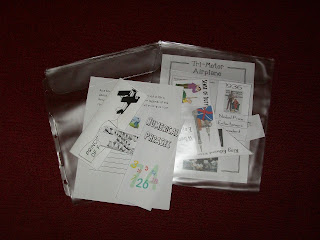So this year we have gone back to our favorite study guides for history-
Beautiful Feet Books (BFB)*. We are feeling so much better and enjoying this transition back to what we know and like. As an added bonus, I have pulled in the Beautiful Feet Books Geography Through Literature study [which my 3 previous kiddos did and loved] because it goes along, just about perfectly, with the California and Westward Expansion that we are covering this year.. Like amazingly. :) Love when that happens!
We put his maps above our white board. He was getting sloppy with his work on the second map-and admitted it. Ah boys-my girls were meticulous and he is like 'whatever'. LOL He also said he decided to go all 'colory' on it, after examining his older brother's and sisters' maps (yep, still have em) and stating that he chose to go wild while they did theirs all nice like (paraphrase of his comment-let me tell you he had me in stitches laughing about his decision).

Because there are four books used in the
Geo study-all Holling C. Holling books-I decided to divide the year into 2 books per semester. Since we started out with the expansion/exploration of sea faring brave-hearts, we began with Seabird. This is actually one of my favorite H.C.H. stories. The boy especially enjoyed it because it was all about sailing and man stuff. The kind of man stories that inspire young lads to dream of heading out to horizons unknown. We also did notebooking [per the instructions in the guide plus a bit of our own] pages on it. And if that wasn't enough of a tie in, since it's about a bird (for the most part) it actually melded seamlessly with our Apologia Flying Creatures of the Fifth Day program! [The first couple chapters are all about birds-so yeah!!! Talk about getting more bang for the buck!]
I found this pic of a seagull coloring page, and then had him
categorize the names like we did in our science lessons.
The notebook is broken into the book sections. I
simply photocopied the cover for the title page,
to make my life easier.
Obviously you could just have the student
write the name of it on paper.
Then we moved to Tree in the Trail. My favorite of the four in this study. Since both the California and the Westward Expansion talk about the movement from east to west in our US history-it was a no brainer of a choice for our next map. Again, we did notebooking as well. Plus, here again-our Little House on the Prairie study fit nicely too (they didn't do the Santa Fe Trail but they did move via wagon and such) which is part of our literature and LLATL study. We have read the first book of hers and the Almanzo book (Farmer Boy) so far. We'll keep on with the series per my grand overall plan for our lit studies. Not to mention they will only further blend into our overall history study for the year.
These pics are from Edwin Tunis's Frontier Living Book-
this is out of print, I own it.
Again, we just copied some pics cuz he doesn't like
drawing and well, again-it's easier. I don't usually
push photocopying pages but there are times, and since this
is for educational purposes and not being sold-
it falls into that gray area.
And there you have it. We'll be done with this semester pretty soon and I have to say, this time around has been so much more enjoyable and refreshing. I will post more about our Apologia experience and other thoughts soon.
*I am not an affiliate for BFBooks but boy I should be-I truly love this curriculum. It is literature based, we can cover as much or as little as we wish, and at our pace. It has activities/notebooking that are easy to do and (at least right now) it is beautifully tying into many of our other subjects! So anyhoo-this is my own personal take on it and no, I didn't get paid or receive anything for it.
















































